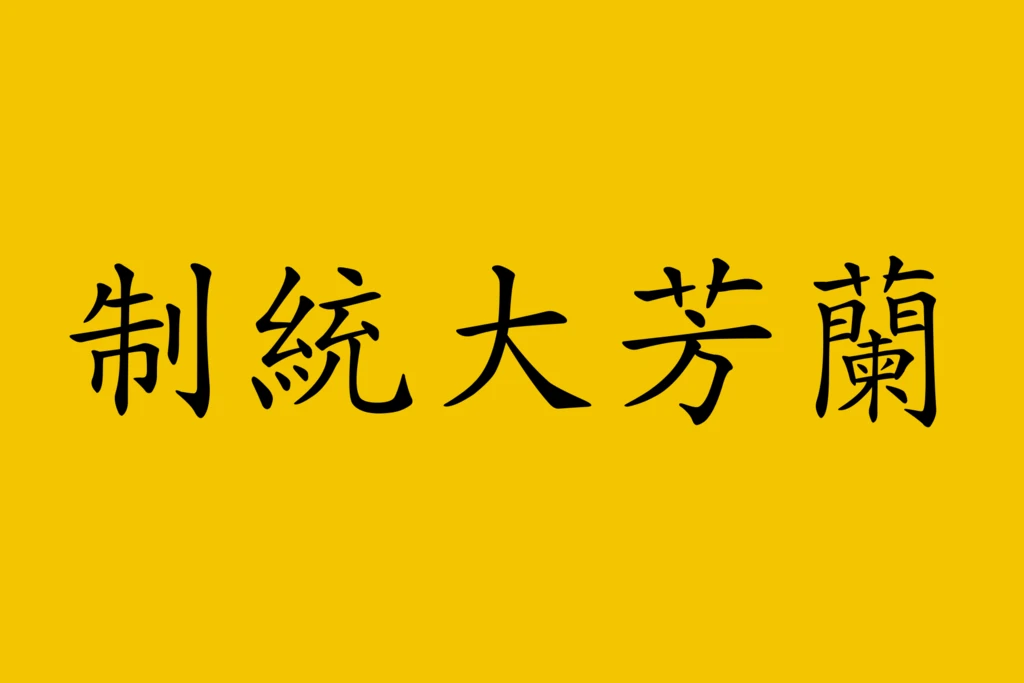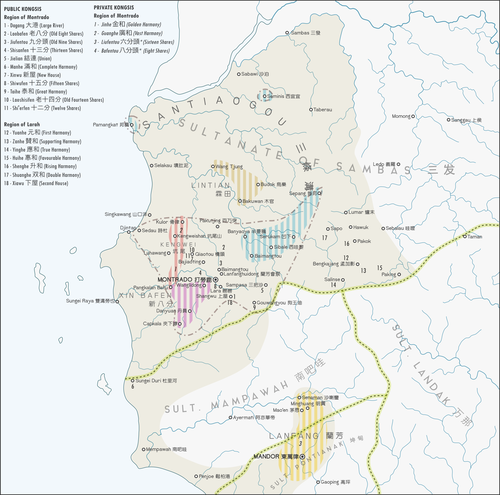-
IP addresses are NOT logged in this forum so there's no point asking. Please note that this forum is full of homophobes, racists, lunatics, schizophrenics & absolute nut jobs with a smattering of geniuses, Chinese chauvinists, Moderate Muslims and last but not least a couple of "know-it-alls" constantly sprouting their dubious wisdom. If you believe that content generated by unsavory characters might cause you offense PLEASE LEAVE NOW! Sammyboy Admin and Staff are not responsible for your hurt feelings should you choose to read any of the content here. The OTHER forum is HERE so please stop asking.
You are using an out of date browser. It may not display this or other websites correctly.
You should upgrade or use an alternative browser.
You should upgrade or use an alternative browser.
There was a Hakka Republic in Borneo 18-19th century... Cik syedu know?
- Thread starter k1976
- Start date

Menu mobile
SOCIETY
SPOTLIGHT
STORIES
SUCCESS
SNAPSHOT
ART + CULTURE
LANFANG REPUBLIC: INDONESIA'S FORGOTTEN CHINESE REPUBLIC
The history of Indonesia after the arrival of European powers is well documented, but we often forget some parts of it, including the Chinese kongsis.
02.02.2022BY JACKSON KEEFE

SHARE THE STORY
The Lanfang Republic was a Chinese republic, or a kongsi federation, established in Western Borneo. It was established in 1777 by a Hakka Chinese Low Lan Pak and was a tributary state of the Qing dynasty. The republic was brought to its end by the Dutch in 1884.
Lanfang, much like other kongsis established in the Nusantara region, left little to no written records of their own.
Instead, accounts of the republic were gathered from nearby kingdoms and Dutch sinologists.
Chinese settlers had long lived on the island of Borneo. The kingdoms of Sambas, Sukadana, and Landak all imported Chinese workers from the mainland. Most of them engaged in trading, mining, and farming. Many of them later established their own companies, known as kongsis, including Lanfang.
The kongsi, however, was established specifically to protect Chinese settlers from the Dutch.
The settlers of the Kongsi elected Low as their first leader, and Mandor was made Lanfang's capital city. The kongsi established relationships, even alliances, with nearby kingdoms, including with Sultan Abdurrahman of the Pontianak Sultanate. Lanfang was devoid of standing military. It did, however, have a defense ministry, with national militia being administered on conscription.
Despite being a kongsi, Lanfang adhered to many Chinese traditions, including the founding year of the republic being made the first year of the calendar. Low also reported to the Qing authorities about the establishment of the republic and even paid tribute to the emperor. During peacetime, Lanfang focused on farming, production, trading, and mining. Its administrative divisions were divided into three tiers, namely province, prefecture, and county. Leaders were elected for all levels of governance.
Low continued to rule Lanfang until his death in 1795. After the death of Low, the citizens of Lanfang elected Jiang Wubo. Lanfang had a total of twelve leaders. It continued to advance in agricultural techniques, mine production, cultural education, and military training.
The Qing dynasty grew weak in the mid-to-late 19th century. This regression in power affected Lanfang, which, in the end, fell to the Dutch. Lin Ah Sin was the last leader of the kongsi. With the help of the local Dayaks, he led the Mandor community in resisting the Dutch. Alas, they were substantially overpowered due to poor weaponry. A significant number of its remaining populace fled to Sumatra and Singapore.
The Dutch did not formally annex Lanfang until 1912 as they feared Qing's intervention. While it controlled the lands previously owned by the kongsi, it established a puppet regime. Only after the collapse of the Qing dynasty did the Dutch formally proclaim their occupation.
Despite being a kongsi, Lanfang adhered to many Chinese traditions, including the founding year of the republic being made the first year of the calendar. Low also reported to the Qing authorities about the establishment of the republic and even paid tribute to the emperor. During peacetime, Lanfang focused on farming, production, trading, and mining. Its administrative divisions were divided into three tiers, namely province, prefecture, and county. Leaders were elected for all levels of governance.
Low continued to rule Lanfang until his death in 1795. After the death of Low, the citizens of Lanfang elected Jiang Wubo. Lanfang had a total of twelve leaders. It continued to advance in agricultural techniques, mine production, cultural education, and military training.
The Qing dynasty grew weak in the mid-to-late 19th century. This regression in power affected Lanfang, which, in the end, fell to the Dutch. Lin Ah Sin was the last leader of the kongsi. With the help of the local Dayaks, he led the Mandor community in resisting the Dutch. Alas, they were substantially overpowered due to poor weaponry. A significant number of its remaining populace fled to Sumatra and Singapore.
The Dutch did not formally annex Lanfang until 1912 as they feared Qing's intervention. While it controlled the lands previously owned by the kongsi, it established a puppet regime. Only after the collapse of the Qing dynasty did the Dutch formally proclaim their occupation.
The first Chinese democracy lasted over 100 years and was quite the success. It just wasn’t in China
- The Lanfang Republic, located in the present-day Indonesian city of Pontianak, was founded by Chinese immigrants and proved a relatively successful experiment
- Threatened by Dutch colonists in Indonesia, the republic’s constitution changed and the presidency became hereditary. It did not last much longer
The dust has finally settled on the death and funeral of Queen Elizabeth, whose longevity and dedication to her duties had earned her the respect and admiration of millions around the world. Her passing, however, presents an opportunity for the Commonwealth realms to decide if they should do away with the monarchy.
Apart from the United Kingdom, the newly minted King Charles III is also the head of state of 14 other independent nations – from countries as massive as Canada and Australia to tiny islands such as Tuvalu – where he is represented by a governor-general.
My ambivalence to monarchy – all monarchies, not just the Windsors – has been articulated in this column before. Royal pageantry and glamour do nothing for me, and I resent having to bow, scrape and genuflect before someone just because he or she happened to be born or married into a particular bloodline, however ancient.
To me, royalty represents unearned privilege and power, and the subservience to its members a symptom of infantilism and internalised inferiority.
Apart from the United Kingdom, the newly minted King Charles III is also the head of state of 14 other independent nations – from countries as massive as Canada and Australia to tiny islands such as Tuvalu – where he is represented by a governor-general.
My ambivalence to monarchy – all monarchies, not just the Windsors – has been articulated in this column before. Royal pageantry and glamour do nothing for me, and I resent having to bow, scrape and genuflect before someone just because he or she happened to be born or married into a particular bloodline, however ancient.
To me, royalty represents unearned privilege and power, and the subservience to its members a symptom of infantilism and internalised inferiority.
The Chinese monarchy was formally abolished in 1912, though there were a few failed attempts to revive it shortly afterwards.
But the first Chinese republic wasn’t the Republic of China, which replaced the Qing dynasty in 1912, nor the short-lived Republic of Formosa, which lasted from May to October 1895 on the island of Taiwan.
But the first Chinese republic wasn’t the Republic of China, which replaced the Qing dynasty in 1912, nor the short-lived Republic of Formosa, which lasted from May to October 1895 on the island of Taiwan.
The first republic founded and governed by the Chinese was located outside China, in the present-day Indonesian city of Pontianak at the western tip of the island of Borneo.
The Lanfang Republic, which existed for a respectable 112 years from 1776 to 1888, was founded by Hakka immigrants from Guangdong, China. At the height of its powers, its influence extended to the whole of Borneo, an island three times the size of the United Kingdom.
The Lanfang Republic, which existed for a respectable 112 years from 1776 to 1888, was founded by Hakka immigrants from Guangdong, China. At the height of its powers, its influence extended to the whole of Borneo, an island three times the size of the United Kingdom.
Founded earlier by Chinese-born Chen Lanbo and Luo Fangbo (hence “Lanfang”) as a militarised company, similar to the British East India Company but on a much smaller scale, the Lanfang Republic was formally organised as a state in 1776 with the support of local rulers and peoples, including the Chinese who had already settled in the region, the Dayaks and the Bornean Malays.
Unique to Asian polities of the time, Lanfang was constituted as a republic with non-hereditary rulers. The current dazongzhi, or president, would identify and nominate a successor. The potential successor had to receive the majority of the people’s vote before he could take over as president when the incumbent died or retired.
https://www.sammyboy.com/"https://w...BUB-BYBgBcB&usg=AOvVaw3L61AhWfJFo1hzDPE_csUs"
Unique to Asian polities of the time, Lanfang was constituted as a republic with non-hereditary rulers. The current dazongzhi, or president, would identify and nominate a successor. The potential successor had to receive the majority of the people’s vote before he could take over as president when the incumbent died or retired.
https://www.sammyboy.com/"https://w...BUB-BYBgBcB&usg=AOvVaw3L61AhWfJFo1hzDPE_csUs"
U kena potong wrongly.... Then jiu square pennis lah abang... Can ask Cik Syed our in-house expertlan fang = square penis?
What utter nonsense. These immigrants needed consent from sultan of pontianak to create their " Disneyland".Not all land belongs to Cik Syed Great Great Great Grand daddy De.... Some belongs to our cina ancestors as well, but just got robbed away when we cannot defend it in 1888
Pekan baru or palembsng was one such outpost. I believe the pirates were eventually flushed out by cheng ho.Probably just a pirate outpost. A lot of spice and tea trade ships used to go though this region.
Good to hear from u againWhat utter nonsense. These immigrants needed consent from sultan of pontianak to create their " Disneyland".
I tot u not around... Then need to post miss u forever... Hahaha
Your Cik Zheng Ho betray Chinese, and let Muslim grew strong and bite the every hands that feed them from 12the century until today, cik syed
Pekan baru or palembsng was one such outpost. I believe the pirates were eventually flushed out by cheng ho.
Similar threads
- Replies
- 2
- Views
- 505
- Replies
- 11
- Views
- 933
- Replies
- 9
- Views
- 750
- Replies
- 12
- Views
- 2K

